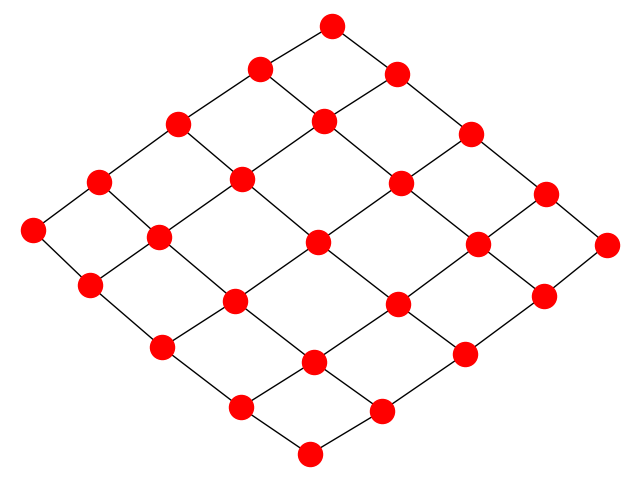Note
Click here to download the full example code
Read and write graphs.¶
Read and write graphs.

Out:
#/home/travis/build/networkx/networkx/examples/basic/plot_read_write.py
# GMT Wed Sep 19 18:49:18 2018
#
(1, 3) (1, 2) (0, 3) (2, 3) (1, 4)
(3, 0) (2, 0) (3, 1) (4, 0)
(2, 1) (2, 0) (3, 1) (1, 1) (2, 2)
(0, 3) (0, 2) (0, 4)
(4, 0) (4, 1)
(1, 2) (1, 1) (0, 2) (2, 2)
(3, 3) (3, 4) (3, 2) (2, 3) (4, 3)
(4, 4) (3, 4) (4, 3)
(2, 2) (3, 2) (2, 3)
(4, 1) (4, 2) (3, 1)
(1, 1) (0, 1) (1, 0)
(3, 2) (4, 2) (3, 1)
(0, 0) (0, 1) (1, 0)
(0, 4) (1, 4)
(1, 4) (2, 4)
(2, 3) (2, 4)
(4, 2) (4, 3)
(1, 0) (2, 0)
(0, 1) (0, 2)
(3, 1)
(2, 4) (3, 4)
(2, 0)
(4, 3)
(3, 4)
(0, 2)
# Author: Aric Hagberg (hagberg@lanl.gov)
# Copyright (C) 2004-2018 by
# Aric Hagberg <hagberg@lanl.gov>
# Dan Schult <dschult@colgate.edu>
# Pieter Swart <swart@lanl.gov>
# All rights reserved.
# BSD license.
import sys
import matplotlib.pyplot as plt
import networkx as nx
G = nx.grid_2d_graph(5, 5) # 5x5 grid
try: # Python 2.6+
nx.write_adjlist(G, sys.stdout) # write adjacency list to screen
except TypeError: # Python 3.x
nx.write_adjlist(G, sys.stdout.buffer) # write adjacency list to screen
# write edgelist to grid.edgelist
nx.write_edgelist(G, path="grid.edgelist", delimiter=":")
# read edgelist from grid.edgelist
H = nx.read_edgelist(path="grid.edgelist", delimiter=":")
nx.draw(H)
plt.show()
Total running time of the script: ( 0 minutes 0.153 seconds)